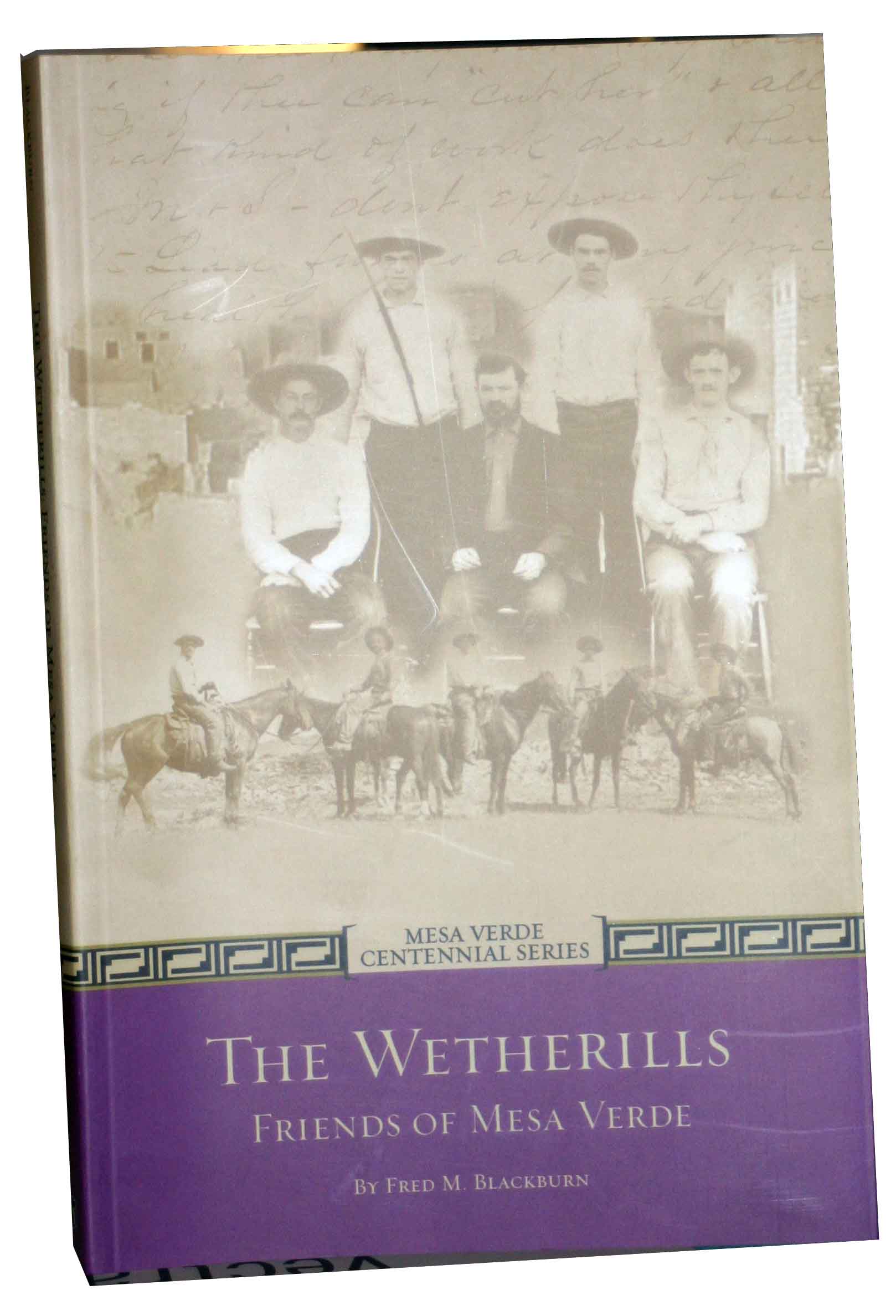 |
This is one of the Mesa Verde Centennial Series.
Following the wake of what one noted scientist called "transients who neither revered nor cared for the ruins as symbols of the past,"
the Wetherill family became the earliest students of Mesa Verde. Their careful excavations and record-keeping helped preserve key information, leading to a deeper understanding of the people who built and occupied the cliff dwellings. As devout Quakers, they felt they were predestined to protect the prehistoric sites from wanton destruction - a role that would not be assumed by the government or other major institutions until years later. Based on decades of meticulous research, author Fred Blackburn sets the record straight on these early protectors of Mesa Verde.
Praise for the Wetherills: Friends of Mesa Verde:
At long last, with Fred Blackburn's publication of The Wetherills: Friends of Mesa Verde, we finally have an accurate and sympathetic look at the first family of southwestern archaeology. Maligned for years as pothunters, the Wetherills were conscientious Quakers deeply interested in the truth about Ancestral Puebloan life throughout the vast Colorado Plateau. Thanks to Blackburn's exhaustive research, the Wetherill family will now b3e recognized as true pioneers in the competitive, and often contentious world of southwestern archaeological exploration. - Andrew Gulliford, Ph.D.
Written by Fred M. Blackburn
ISBN 1-887805-21-4
Fred Blackburn began his career in southeastern Utah's Natural Bridges National Monument, as the first Grand Gulch ranger program in 1974, protecting archaeological sites on three and one half million acres of public lands. In 1979 - 1981 he helped establish the Crow Canyon archaeological center, and then returned to Utah to aid in establishing the White Mesa Institute at the College of Eastern Utah. That effort produced the innovative Wetherill/Grand Gulch research project, a four year volunteer effort from 1986-1990.
Fred currently works as an independent guide, author, and gentleman rancher. He volunteers his services to the Bureau of Land Management's Anasazi Center near Dolores, Colorado, organizing the center.
Fred co-authored Cowboys and Cave Dwellers, published by the School of American Research in 1997, with Ray Williamson. His contributions to other texts include:
Handwriting on the Wall, found in Anasazi Basketmaker, a cultural resource series publication by Utah Bureau of Land Management in 1993; and "historic inscriptions and the first recorded visits to Balcony House," in A History of A Cliff Dwelling in Mesa Verde National Park, Colorado, by Kathleen Fiero. Fred has also completed a major research manuscript of Mesa Verde National Park (from which this book is derived) titled Historical Inscriptions and the Expeditionary History of Balcony House, Cliff Palace, Hemenway Houses and Spruce Tree House: a history of Discovery, Exploration, Photography and Documentation.
Fred uses historical inscriptions as a primary research reference.
He holds a biological science degree and secondary science education certificate from Fort Lewis College.
He lives in Cortez, Colorado, with his wife Victoria and children Lucas and Julianna.
The Mesa Verde Centennial Series is a collection of books published in celebration of the anniversary of Mesa Verde officially becoming a national park in 1906.
Three groups came together to create and publish this series.
It is sponsored by the Mesa Verde Museum Association,
Mesa Verde National Park
and
The Center of Southwest Studies, which is located in Durango, Colorado, at Fort Lewis College.
The series is published by the Durango Herald Small Press.
$15.95
Toll free contact number 1 833 239 1261
|



